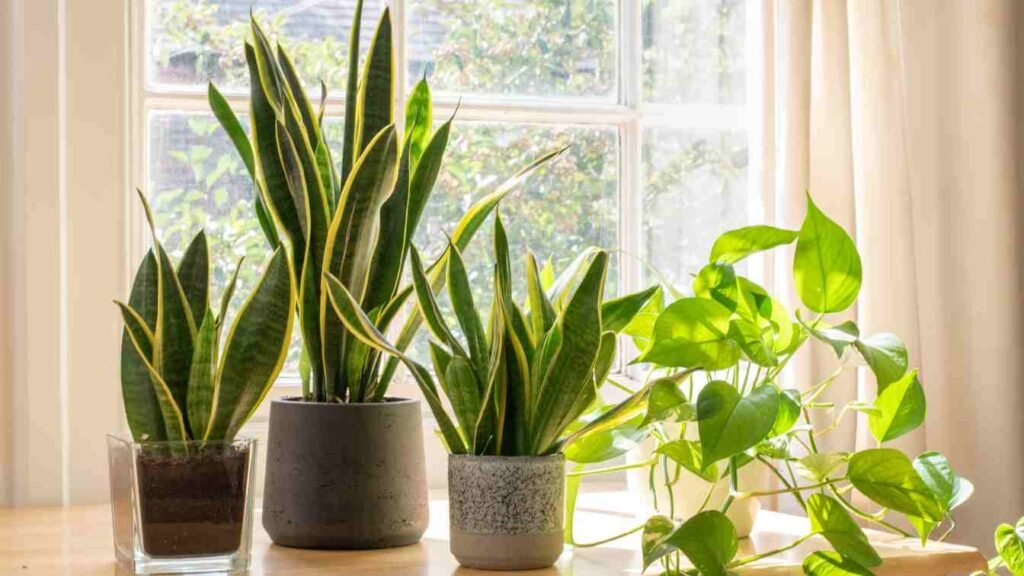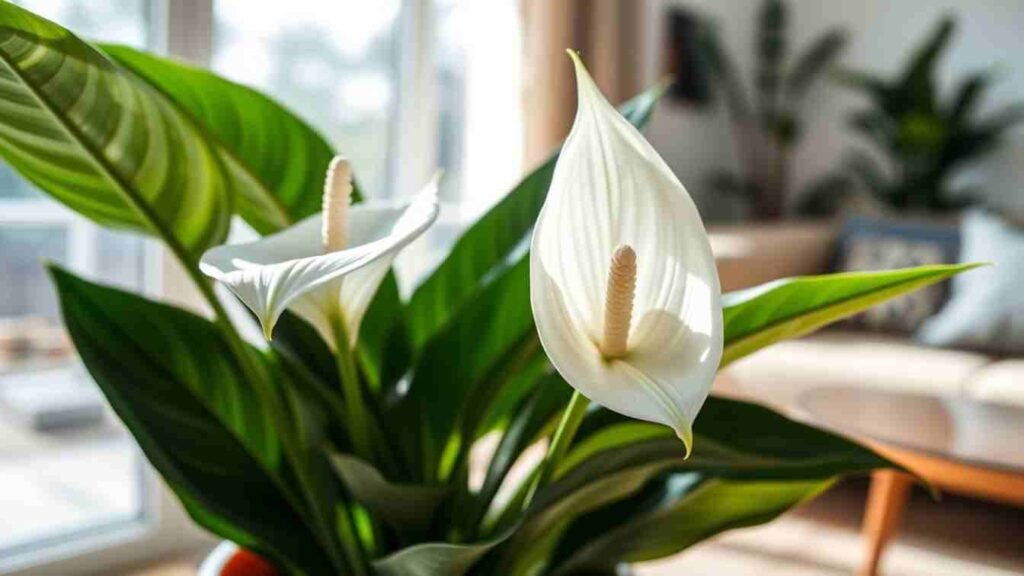Looking to bring life and freshness into your living room? Indoor plants are the perfect way to add beauty, improve air quality, and create a calming atmosphere. But with so many options available, how do you choose the right ones for your space? In this comprehensive guide, we’ll explore the best indoor plants for living rooms, provide detailed care instructions, offer styling tips, and answer common questions—all while keeping things simple and actionable.
Why Add Indoor Plants to Your Living Room?
Indoor plants aren’t just decorative—they’re functional too! Here’s why they’re worth adding to your living room:
- Air Purification: Certain plants filter toxins like formaldehyde, benzene, and ammonia from the air.
- Mood Boost: Studies show that being around greenery reduces stress and increases happiness.
- Natural Decor: Plants add texture, color, and warmth to any space, enhancing its aesthetic appeal.
- Improved Productivity: Surrounding yourself with nature can boost focus and creativity.
Top 10 Best Indoor Plants for Living Rooms
Here’s a curated list of the best plants for every type of living room, complete with care tips and unique features.
1. Snake Plant (Sansevieria trifasciata)

- Why It’s Great: Extremely hardy and thrives in low light—perfect for beginners or busy individuals.
- Care Tips: Water sparingly (once every 2-3 weeks) and place it in indirect sunlight.
- Benefits: NASA-approved air purifier; removes toxins like formaldehyde and xylene.
Snake plants are one of the easiest indoor plants to care for. Learn more in our indoor snake plant care guide.
2. Pothos (Epipremnum aureum)
- Why It’s Great: Adaptable to various lighting conditions and easy to propagate.
- Care Tips: Allow the soil to dry between waterings; trim regularly to encourage fuller growth.
- Benefits: Pet-safe if kept out of reach; trailing vines look stunning in hanging baskets or shelves.
The Ultimate Guide to Snake Plant Care Discover the secrets to growing and maintaining snake plants effortlessly indoors.
3. ZZ Plant (Zamioculcas zamiifolia)
- Why It’s Great: Virtually indestructible, making it ideal for forgetful plant parents.
- Care Tips: Prefers indirect light and infrequent watering (once a month).
- Benefits: Glossy leaves add elegance to modern interiors.
Want to learn more? Check out our complete ZZ plant care guide for all the tips you need to succeed.
4. Peace Lily (Spathiphyllum spp.)

- Why It’s Great: Beautiful white blooms and excellent air-purifying properties.
- Care Tips: Keep the soil moist but not soggy; mist occasionally to maintain humidity.
- Benefits: Acts as a natural humidifier, perfect for dry climates.
5. Spider Plant (Chlorophytum comosum)
- Why It’s Great: Produces baby plants (spiderettes) that can be propagated easily.
- Care Tips: Bright, indirect light and moderate watering work best.
- Benefits: Non-toxic to pets and humans; filters harmful chemicals from the air.
6. Fiddle Leaf Fig (Ficus lyrata)
- Why It’s Great: Iconic large leaves make it a statement piece in any room.
- Care Tips: Needs bright, indirect light and consistent watering (when the top inch of soil feels dry).
- Benefits: Adds height and drama to tall spaces.
7. Rubber Plant (Ficus elastica)
- Why It’s Great: Dark green, glossy leaves bring a tropical vibe indoors.
- Care Tips: Tolerates low light but prefers bright, indirect light; water moderately.
- Benefits: Available in burgundy and variegated varieties for added visual interest.
8. Monstera Deliciosa
- Why It’s Great: Famous split leaves give it a trendy, Instagram-worthy look.
- Care Tips: Place near a window with filtered light and water once a week.
- Benefits: Can grow quite large, becoming a focal point in spacious living rooms.
9. Boston Fern (Nephrolepis exaltata)
- Why It’s Great: Lush foliage adds texture and softness to your decor.
- Care Tips: Loves humidity; mist frequently or place on a pebble tray.
- Benefits: Excellent at removing airborne pollutants.
10. Aloe Vera
- Why It’s Great: Functional and stylish, it doubles as a first-aid remedy for minor burns.
- Care Tips: Bright, direct light and infrequent watering are key.
- Benefits: Low-maintenance and compact, fitting snugly on side tables.
Want to grow beautiful blooms? Don’t miss this step-by-step flower gardening guide.
How to Choose the Right Plant for Your Space
Before purchasing, consider these factors:
- Light Availability: Does your living room get lots of natural light, or is it mostly shaded?
- Room Size: Larger plants suit bigger spaces, while smaller ones fit cozy nooks.
- Lifestyle: Are you often away? Opt for drought-tolerant options like succulents or snake plants.
- Pets & Kids: Ensure the plants you pick are non-toxic if you have curious little ones.
Decorating with Indoor Plants
Plants aren’t just functional—they’re also design elements. Here’s how to style them:
- Grouping: Cluster different-sized pots together for a dynamic display.
- Layering: Combine tall plants (like fiddle leaf figs) with shorter ones (like pothos) for depth.
- Color Contrast: Pair green foliage with colorful pots or neutral furniture for balance.
- Vertical Space: Use hanging planters or shelves to maximize vertical real estate.
Troubleshooting Common Plant Problems
Even the easiest plants can face challenges. Here’s what to do:
- Yellow Leaves: Overwatering or poor drainage could be the culprit. Adjust watering habits and ensure proper pot drainage.
- Brown Tips: Often caused by low humidity. Increase moisture levels with a humidifier or regular misting.
- Pests: Wipe leaves with soapy water or neem oil to deter bugs like spider mites or aphids.
Seasonal Care Tips
- Spring/Summer: This is the growing season. Increase watering frequency and fertilize monthly.
- Fall/Winter: Reduce watering and avoid repotting during dormancy periods.
Frequently Asked Questions
Q: How often should I water my indoor plants?
A: It depends on the plant species. For example, snake plants need watering every 2-3 weeks, while peace lilies prefer consistently moist soil. Always check the soil before watering.
Q: What if my living room has no natural light?
A: Choose low-light plants like snake plants, ZZ plants, or pothos. You can also supplement with artificial grow lights.
Q: Are indoor plants safe for pets?
A: Some plants, like spider plants and Boston ferns, are pet-safe. Others, like peace lilies, can be toxic. Always research before buying.
Final Thoughts
Adding indoor plants to your living room doesn’t have to be overwhelming. Start small, experiment with placement, and watch your space transform into a lush, vibrant oasis. With the right choices and care, you’ll enjoy a healthier, happier home environment.

